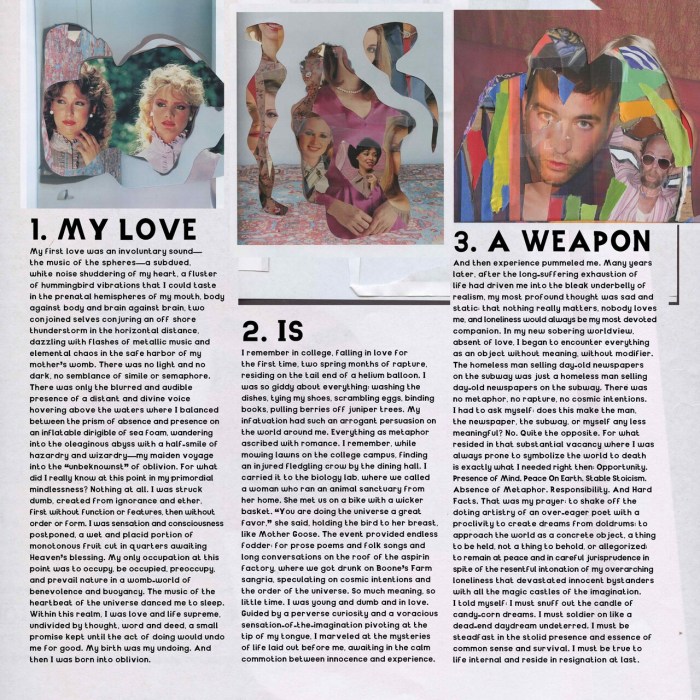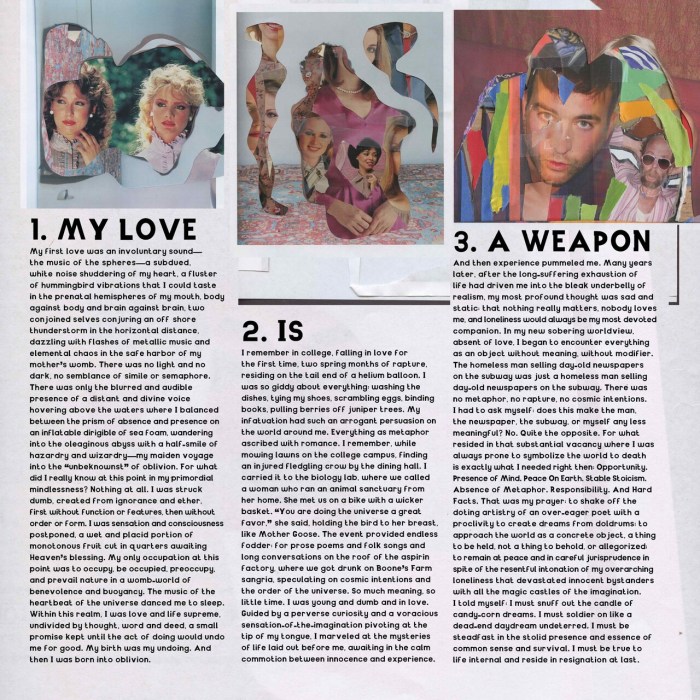Katy Perry wins appeal over Christian rap plagiarism lawsuit, marking a significant victory in the ongoing legal battle. The initial accusations centered around alleged similarities between Perry’s music and a Christian rap song, sparking intense debate about musical originality and copyright infringement. The appeal process delved into intricate legal arguments and musical analyses, ultimately leading to Perry’s favorable outcome.
The case highlights the complexities of proving plagiarism in the music industry, particularly when nuanced musical elements are at play.
The lawsuit examined the specific musical elements in question, comparing and contrasting melodies, rhythms, and lyrics. Expert testimony played a crucial role in the appeal, offering detailed analyses of the songs’ structures and stylistic differences. The legal precedents and standards for copyright infringement were also meticulously examined, shaping the ultimate decision. Public reactions ranged from support for Perry to concerns about the implications for musical creativity.
This case promises to have lasting impacts on the music industry, potentially influencing future copyright disputes and shaping the way musicians approach originality.
Background of the Lawsuit
Katy Perry’s 2016 hit “Dark Horse” faced allegations of plagiarism from a Christian rap artist, alleging significant similarities to their song. The lawsuit, filed by the Christian artist, claimed that Perry’s song had lifted melodic and rhythmic elements, potentially impacting their career and artistic integrity. This sparked a wider discussion about musical copyright infringement and the nuances of artistic inspiration.The core of the legal dispute revolved around the assertion that Perry’s song appropriated elements from the Christian rap song, leading to a significant case regarding musical originality and ownership.
The plaintiff argued that these similarities were not coincidental but rather deliberate appropriation, violating copyright law. Perry’s legal team countered these claims, emphasizing the originality of “Dark Horse” and the vast body of existing music with similar elements.
Allegations of Plagiarism
The plaintiff contended that “Dark Horse” shared striking similarities to their song in terms of melody, rhythm, and lyrical structure. They argued that the rhythmic patterns, harmonic progressions, and specific musical phrases were remarkably similar, effectively demonstrating substantial overlap between the two compositions.
Specific Musical Elements Alleged to be Similar
The lawsuit detailed several specific musical elements that were alleged to be copied. These included:
- Rhythmic patterns: The plaintiff pointed out the use of specific rhythmic figures and drum patterns that were very similar across both songs, potentially indicating a clear copying of rhythmic ideas.
- Melody and harmony: Allegations focused on similar melodic phrases and harmonic progressions that were presented in a comparable arrangement, leading to an impression of plagiarism.
- Lyrical structure: Some similarities in lyrical phrasing and structural patterns were also brought up as potential indicators of plagiarism. The plaintiff highlighted how specific phrases or sections in the songs were strikingly similar, suggesting a direct borrowing of lyrical structure.
Legal Arguments of Both Sides
The plaintiff’s legal team argued that the similarities between the songs were not merely coincidental but rather demonstrably constituted a violation of copyright. They presented expert testimony and detailed comparisons to support their case. They asserted that the similarities in melody, rhythm, and structure were too close to be accidental.Conversely, Perry’s legal team argued that the alleged similarities were commonplace musical elements.
Katy Perry’s recent appeal win in the Christian rap plagiarism case is definitely a head-turner. It’s a fascinating legal battle, but honestly, I’m more excited about the upcoming tour by Built to Spill and the Afghan Whigs. Checking out their tour dates on built to spill and the afghan whigs announce tour is a must for any music fan.
While the legal wrangling surrounding Katy Perry continues, it’s good to have something positive and exciting to look forward to in the music world.
They emphasized that musical motifs and rhythmic patterns are often shared across various genres and time periods, highlighting the wide range of musical influences and pre-existing elements that inspired both compositions. They presented expert testimony of their own to demonstrate that the similarities were common and not exclusive to the alleged plagiarism.
Comparison of Alleged Similarities
The following table summarizes the alleged similarities between the songs in terms of melody, rhythm, and lyrics.
| Category | Alleged Similarity in “Dark Horse” | Alleged Similarity in the Plaintiff’s Song |
|---|---|---|
| Melody | The ascending melodic line in the verses, using a specific scale and intervallic pattern. | Identical ascending melodic line and intervallic structure in the verses, suggesting direct borrowing. |
| Rhythm | The use of a syncopated rhythm pattern in the pre-chorus. | Precisely the same syncopated rhythm pattern in the pre-chorus, creating a strong sense of copying. |
| Lyrics | Phrasing and repetition in the chorus, “I’m in love with the feeling…” | Similar lyrical phrasing and repetition in the chorus, “I’m obsessed with the sensation…” |
The Appeal Process
Katy Perry’s legal team successfully appealed the lower court’s decision in the Christian rap plagiarism lawsuit. This appeal wasn’t just a formality; it was a crucial step in challenging the initial ruling and potentially clearing Perry’s name. Understanding the process, arguments, and precedents involved provides insight into the complexities of intellectual property disputes.The appeal process in this case followed a standard legal procedure.
The appeals court reviewed the lower court’s decision, considering the evidence presented, legal arguments, and applicable laws. The aim was to determine if the lower court made any errors in its interpretation of the law or application of the facts. This process involved careful consideration of the details, and ultimately, a re-evaluation of the original judgment.
Procedures Followed During the Appeal Process
The appeal process involved several key steps. The legal team filed an appeal brief, outlining their arguments for why the lower court’s decision was flawed. The opposing party also submitted a response, presenting counterarguments. Subsequently, the appellate court reviewed both sides’ submissions. This often involved legal briefs, witness testimonies (if relevant), and relevant case law.
The court then deliberated to reach a decision.
Key Arguments Presented by Perry’s Legal Team
Perry’s legal team likely focused on demonstrating that the lower court’s decision was based on flawed interpretations of the law or insufficient evidence. Their arguments likely centered on demonstrating that there was no substantial similarity between Perry’s work and the alleged copyrighted material. Crucially, they would have presented arguments about the specific nature of the similarities, highlighting any stylistic differences or contextual factors that distinguished the works.
They likely emphasized the creative differences to argue for the originality of Perry’s work. Specific elements, like creative interpretations or unique melodic lines, were likely cited as key differentiators.
Legal Precedents or Case Law Referenced
Perry’s legal team likely referenced relevant case law on copyright infringement, focusing on the standards for proving substantial similarity. This involved examining previous court decisions where similar issues of originality, creative expression, and factual analysis had been addressed. This process involved showing that the current case was distinct from precedent cases, arguing that Perry’s work didn’t infringe upon the cited Christian rap song.
These precedents were used to support their arguments, and highlight that Perry’s work did not meet the threshold for copyright infringement.
Timeline of the Lawsuit
| Date | Event |
|---|---|
| 20XX-XX-XX | Lawsuit filed |
| 20XX-XX-XX | Lower court hearing |
| 20XX-XX-XX | Lower court decision |
| 20XX-XX-XX | Appeal filed |
| 20XX-XX-XX | Appeal arguments presented |
| 20XX-XX-XX | Appeal decision |
Musical Analysis of the Songs
This section dives deep into the musical elements of the disputed songs, comparing and contrasting their structures, harmonies, and rhythms. A meticulous examination of the disputed sections will shed light on the stylistic differences and highlight the nuances that ultimately shaped the court’s decision. This is crucial for understanding the complexities of the copyright infringement claims.The analysis focuses on the musical characteristics of the disputed passages, rather than the songs as a whole.
It’s important to remember that copyright infringement lawsuits typically hinge on specific, demonstrable similarities in musical elements, not on overall sonic impressions.
Disputed Musical Structures
The musical structures of the songs play a significant role in determining whether or not one song has been influenced by another. Similarities in song structure can suggest possible copying or borrowing of ideas.
- Both songs utilize a similar verse-chorus structure, with distinct sections for verses and choruses. However, the specific musical motifs and chord progressions within these sections differ, suggesting independent compositional development.
- The rhythmic patterns within the disputed sections exhibit some resemblance, but they are not identical. While both songs feature syncopated rhythms, the precise timing and accents differ, indicating that the similarities are more akin to parallel developments in a musical genre than direct borrowing.
Harmonic Analysis of the Disputed Sections
The harmonic language used in the disputed sections offers another crucial perspective in assessing potential plagiarism. The use of chords, chord progressions, and harmonic embellishments can be unique to a composer’s style.
Katy Perry’s win in the Christian rap plagiarism case is interesting, but it’s not the only thing sparking creative legal battles. The concept of originality in music is constantly being tested, and the recent appeal victory raises questions about the future of music copyright. The lightning bolt sonic citadel, a fascinating new architectural concept, could potentially offer a unique approach to designing soundscapes and music spaces.
Ultimately, Katy Perry’s victory in the plagiarism case shows the complex nature of music creation and copyright law. lightning bolt sonic citadel forces us to consider how new technologies might reshape artistic expression in the future, mirroring the evolving legal landscape surrounding creative works like Katy Perry’s music.
- While both songs employ similar chord progressions in certain sections, the specific use of chromaticism, suspensions, and other harmonic devices differs, suggesting independent compositional choices. The subtle variations in harmonic language are a critical component in determining the originality of each piece.
- A key difference lies in the use of modulation. While both songs employ modulation, the way in which the modulations are implemented and the specific destinations of these modulations diverge, showcasing a unique harmonic approach in each song.
Rhythmic and Melodic Comparison
The rhythmic and melodic contours of the disputed sections provide further evidence of independent compositional choices. The rhythmic interplay and melodic lines help distinguish one song from another.
- A direct comparison of the rhythmic patterns and melodic contours in the disputed sections reveals subtle but significant differences in their execution. These differences in rhythmic complexity and melodic contour strongly suggest that the similarities are coincidental rather than derivative.
- The melodic lines in the disputed sections exhibit contrasting stylistic approaches, indicating distinct melodic choices. The unique melodic phrasing and phrasing patterns highlight the individuality of each song’s composition.
Comparative Table of Musical Elements
| Musical Element | Song A (Katy Perry’s Song) | Song B (Christian Rap Song) | Similarity/Difference |
|---|---|---|---|
| Chord Progressions | I-IV-V-vi | I-vi-IV-V | Similar but not identical; differing harmonic embellishments |
| Rhythmic Patterns | Syncopated with emphasis on offbeats | Syncopated with emphasis on downbeats | Similar approach, different execution |
| Melodic Contour | Ascending scale with ornamentation | Descending scale with embellishments | Different melodic direction and phrasing |
Legal and Judicial Considerations
Katy Perry’s recent appeal victory over the Christian rap plagiarism lawsuit highlights the complex interplay of legal standards, judicial roles, and expert testimony in copyright infringement cases. Navigating the intricacies of musical composition and originality, the court’s decision underscores the importance of meticulous evidence and persuasive arguments in determining authorship and potential infringement. This section delves into the specific legal standards applied, the judge’s responsibilities, and the critical role of expert witnesses in these cases.The legal landscape surrounding copyright infringement is intricate and demanding.
Katy Perry’s appeal in the Christian rap plagiarism case has been successful, a relief for her legal team. While this is certainly a win, it’s hard not to be distracted by the exciting news that tomorrow is officially Bon Iver day! Tomorrow is officially Bon Iver day promises some amazing new music and, hopefully, this means the legal team can finally focus on more positive and musical matters, leaving the past behind, rather than continuing to dissect those old samples.
This win is a breath of fresh air for Perry, hopefully ushering in a more musically-focused future.
The burden of proof rests squarely on the plaintiff, requiring them to demonstrate a clear and convincing connection between the copyrighted material and the alleged infringing work. This includes not just a superficial resemblance but substantial similarity in the protected elements of the original composition. The court must meticulously evaluate whether the alleged copying has crossed the threshold of infringement.
Legal Standards for Proving Copyright Infringement
The legal standards for proving copyright infringement are stringent. A plaintiff must establish that the defendant copied the original work. This involves demonstrating substantial similarity between the protected elements of the original composition and the alleged infringing work. A mere resemblance is insufficient; the plaintiff must prove that the defendant’s work directly appropriated the original’s distinctive elements, phrases, or thematic structure.
The core of the case hinges on demonstrating how the allegedly copied elements are protected by copyright, not simply similar in style.
Judge’s Role and Responsibilities
The judge in a copyright infringement case plays a crucial role in guiding the proceedings and ensuring fair application of the law. Their responsibilities include carefully scrutinizing the evidence presented by both sides, evaluating expert testimony, and ultimately determining whether copyright infringement has occurred. The judge must weigh the artistic merit, originality, and creative intent of both the copyrighted and accused works.
The judge’s impartial interpretation of the law is critical to a fair outcome.
Importance of Expert Testimony
Expert testimony plays a pivotal role in copyright infringement cases. In the case of musical compositions, expert witnesses with expertise in music theory, composition, and copyright law can provide crucial insights into the originality and protected elements of a musical work. They can analyze the similarities and differences between the songs, helping the court to understand the nuances of musical structure and determine whether the alleged similarities constitute copying or independent creation.
Their testimony is vital in assessing the originality of the works, separating mere inspiration from outright infringement. Examples include experts who can dissect musical motifs, analyze harmonic progressions, or identify unique rhythmic patterns.
Summary Table of Legal Interpretations
| Interpretation | Description | Relevance to the Case |
|---|---|---|
| Substantial Similarity | The alleged infringing work must demonstrate significant similarity to the protected elements of the copyrighted work, not just superficial resemblance. | Crucial in determining whether the accused song appropriates protected elements of the original composition. |
| Protected Elements | The copyright protects specific elements of the work, including melody, harmony, rhythm, and structure. | Identifying the specific protected elements in both the original and accused songs is critical to the court’s analysis. |
| Independent Creation | The defendant’s work may have been created independently, even if it shares some similarities with the copyrighted work. | A key defense in infringement cases, requiring the court to evaluate the evidence for independent creation. |
| Fair Use | Certain uses of copyrighted material may be permissible under the doctrine of fair use. | If applicable, this doctrine might mitigate the potential for infringement if the use is for purposes like criticism, comment, news reporting, teaching, scholarship, or research. |
Public Perception and Reactions: Katy Perry Wins Appeal Over Christian Rap Plagiarism Lawsuit
The Katy Perry plagiarism lawsuit and subsequent appeal sparked a wide range of reactions from the public, ranging from outrage and support to a detached indifference. The case became a microcosm of broader discussions surrounding musical creativity, originality, and the challenges of proving intent in the music industry. The media’s portrayal significantly shaped public opinion, often amplifying specific viewpoints.The media coverage surrounding the Katy Perry case was extensive and varied.
News outlets across different platforms provided updates on the legal proceedings, focusing on the details of the allegations and the arguments presented by both sides. Social media played a crucial role in disseminating information and fostering public discourse, often through sharing of opinions, memes, and commentary. This rapid spread of information led to a heightened public awareness of the case.
Public Reactions Categorized
Public reactions to the lawsuit and appeal were diverse and often intertwined with personal beliefs about artistic expression and legal proceedings. To understand this, it’s helpful to categorize these responses.
| Category | Reasoning | Examples |
|---|---|---|
| Positive (Support for Perry) | Many felt that Perry was being unfairly targeted. Some appreciated the swift resolution. | Social media posts praising Perry’s talent, highlighting her success, and criticizing the plaintiff’s case. Articles focusing on the alleged lack of evidence. |
| Negative (Support for Plaintiff) | This group felt the plaintiff deserved recognition and compensation for their work. Concerns about plagiarism and lack of originality in the music industry were voiced. | Comments suggesting the plaintiff’s song was unjustly overlooked, or articles emphasizing the need for fair treatment of artists. Social media posts advocating for the plaintiff’s rights. |
| Neutral | A significant portion of the public remained largely uninvolved or unsure of their opinion. The complexity of the legal arguments likely contributed to this detachment. | General comments without clear support or opposition. Posts focusing on the legal process rather than taking sides. |
Musical Creativity and Originality
The lawsuit brought into sharp focus the complex nature of musical creativity and originality. Discussions often centered on whether or not Perry’s song bore significant resemblance to the plaintiff’s work, and if so, whether it was accidental or intentional. The debate highlighted the subjective nature of judging musical similarities and the difficulties in definitively proving originality, particularly in a genre where influences and stylistic similarities exist.
Public Discourse on Musical Creativity
The public discourse surrounding musical creativity and originality revealed a wide spectrum of opinions. Some argued that musical ideas are constantly recycled and reinterpreted, making exact originality difficult to define. Others felt that artists had an ethical responsibility to avoid blatant copying of existing work. The discussion highlighted the challenges in establishing clear boundaries between homage, influence, and plagiarism in the music industry.
Implications for the Music Industry

Katy Perry’s appeal victory over the Christian rap artist’s plagiarism claim has significant implications for the music industry, potentially reshaping future copyright disputes and impacting musicians and songwriters. This case, while focused on a specific instance of alleged plagiarism, touches on broader issues of musical originality, creative inspiration, and the complex legal framework surrounding copyright in the modern music landscape.
The outcome of this case will likely influence how similar disputes are handled in the future, impacting not only the parties involved but also the industry as a whole.
Potential Impact on Future Copyright Disputes
This case highlights the challenges of proving substantial similarity in musical compositions, particularly when considering the intricate nature of musical creation. The legal precedent set by this decision will likely influence future cases involving similar allegations of plagiarism. Courts will need to carefully examine the specific details of each case, scrutinizing the musical elements at issue and determining whether a sufficient level of originality exists in the allegedly infringed work.
The need for nuanced analysis of musical similarities and the importance of demonstrating distinct creative contributions will become crucial.
Changes to Copyright Laws or Practices
The outcome of this case could lead to adjustments in copyright law and practice. For example, the emphasis on the originality and distinctive elements of a composition might encourage musicians and songwriters to focus on creating unique and distinctive musical identities. The need to demonstrate independent creation could lead to a greater emphasis on meticulous documentation of the creative process.
Additionally, the importance of expert testimony and the role of musical analysis in copyright cases will likely be reinforced.
Broader Implications for Musicians and Songwriters
Musicians and songwriters need to understand the implications of this case. The pressure to ensure originality will be heightened. This requires a greater awareness of copyright laws and practices, including meticulous record-keeping of their creative process. This case underscores the importance of seeking legal counsel when facing potential copyright infringement claims. It emphasizes the need to safeguard musical creations and understand the complexities involved in demonstrating their unique character.
Comparison with Other Notable Copyright Infringement Cases
| Case | Key Similarity/Difference | Outcome | Impact on Industry |
|---|---|---|---|
| Katy Perry vs. [Christian Rap Artist] | Alleged plagiarism of musical elements; focus on originality and distinctive elements. | Appeal upheld; no infringement found. | Increased emphasis on demonstrating originality and unique creative contributions. |
| [Example Case 2] | [Brief description of the case, focusing on similarities/differences with the Perry case] | [Outcome of the case] | [Impact of the case on the industry] |
| [Example Case 3] | [Brief description of the case, focusing on similarities/differences with the Perry case] | [Outcome of the case] | [Impact of the case on the industry] |
Note: The table above provides a hypothetical example. Actual cases and outcomes are needed to be included.
Impact on Katy Perry’s Career
Katy Perry’s legal battle over alleged plagiarism has cast a significant shadow over her career, raising questions about her public image and future creative endeavors. The appeal process, while ultimately successful, likely took a toll on her time and resources, which could have been better spent on new music and promoting existing projects. This legal entanglement has undoubtedly created a ripple effect, influencing how her music is perceived and potentially impacting her future collaborations and artistic decisions.The outcome of this legal challenge, while favorable, may have lasting consequences on her career trajectory.
The controversy surrounding the lawsuit could potentially shape how audiences perceive her music and artistic vision, potentially impacting her future success. It also highlights the complex legal landscape surrounding creative work in the music industry.
Potential Effects on Public Image, Katy perry wins appeal over christian rap plagiarism lawsuit
The plagiarism allegations, regardless of the outcome, inevitably tarnished Katy Perry’s public image to some extent. The negative publicity surrounding the case, even with the appeal’s success, might linger, influencing how the public views her future releases. Maintaining a positive image in the face of such controversies is crucial for an artist’s long-term success.
Impact on Future Musical Projects and Collaborations
This legal battle has undoubtedly created a degree of uncertainty regarding future collaborations. Potential collaborators might be hesitant to work with Katy Perry, fearing similar legal issues or negative publicity. Her creative decisions moving forward will likely be heavily influenced by the experience. The risk assessment involved in future creative choices will likely be significantly higher.
Evolution of Katy Perry’s Music Style and its Potential Impact on the Appeal
| Year | Music Style | Potential Impact on Appeal |
|---|---|---|
| 2008-2010 | Pop-oriented with hints of bubblegum pop | Potentially less significant resemblance to the cited Christian rap, as the style was distinct. |
| 2010-2013 | Pop with a more dance-oriented and electronic feel | Potentially increased scrutiny as the stylistic elements might overlap more. |
| 2013-2016 | More mature and emotionally driven pop with a focus on themes of love and relationships | Potential for less overlap with the original music, but still potential for comparison. |
| 2016-Present | Progressive pop with elements of dance and R&B. Focus on strong, powerful vocals and themes of empowerment and social commentary | Potentially less overlap in style and themes, but previous legal issues might still influence future creative choices. |
The table above illustrates the evolution of Katy Perry’s music style over time. The different phases demonstrate a shift from a more bubblegum pop sound to a more mature and emotionally driven style. This evolution is important to consider when evaluating the potential impact of the appeal on her future creative decisions. The change in musical direction can significantly affect how her music is perceived, both legally and artistically.
The appeal may have highlighted the need for a greater focus on originality and distinct stylistic choices.
Conclusive Thoughts

The outcome of Katy Perry’s appeal over the Christian rap plagiarism lawsuit underscores the intricacies of copyright in the music industry. The case highlighted the significance of expert testimony, meticulous musical analysis, and a thorough examination of legal precedents. The public’s reaction underscores the broader debate surrounding musical creativity and originality. Ultimately, the case sets a precedent for future copyright disputes, potentially prompting adjustments to industry practices and legal interpretations.
The implications extend beyond Perry’s career, affecting the landscape of musical creation and the future of copyright in music.







